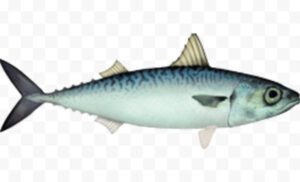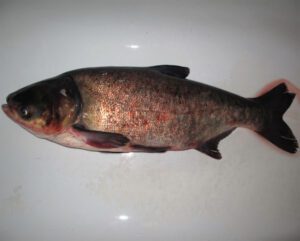The Pangasius fish or Pangas catfish or Pangasius pangasius is a species of shark catfish. It is native to fresh and brackish waters of Southern Asian countries. And it is highly available in India, Bangladesh, Myanmar and Pakistan. It has also been introduced to Cambodia and Vietnam. Pangas fish is relatively cheap as compared to many other common fish species available in the market. This fish can grow to a standard length of 3 meters. It is a riverine catfish, belonging to the members of the family Pangasidae and it exhibits fast growth when raised in a good environment.
Pangasius is a very popular fish species among the Vietnamese for a very long time. This fish is being exported to over 100 nations from Vietnam with principle markets in Europe, Russia and the United States. Currently, demand of Pangasius fish is high and expected to go up. Pangas fsih has a range of different qualities that make this fish a suitable candidate for commercial fish farming business. Production methods such as hormone induced spawning have allowed Pangasius aquaculture to develop rapidly and for the fish to become a globally important product.
Pangas fish is highly popular throughout the world mainly because of it’s relatively low cost, mild flavor and delicate texture. In the meantime, commercial Pangas fish farming in Vietnam and additional production by countries such as China have led to the marketing of Pangasius filets at low prices.
Pangas or Pangasius fish is mostly found in freshwater. It can also live in salt concentrations of around 0.7 percent – 1 percent and alum water (PH >5) which can be tolerated at temperatures of around 30°C. Growth rate of Pangas fish is relatively rapid and it can live in the wild for as long as 20 years. This fish reach about 10-12 cm long and 14-15 grams in weight after around 2 months during breeding. These fish can reach between 0.8 and 1.1 kg after 6-8 months of age in commercial farming pond. And they reach around or up to 25 kg body weight in farming pond by the age of 10.
Classification of Pangas Fish
| Kingdom | Animalia |
| Phylum | Chordata |
| Class | Actinopterygii |
| Order | Siluriformes |
| Family | Pangasiidae |
| Genus | Pangasius |
| Species | P. pangasius |
| Scientific Name | Pangasius pangasius |

Pangasius Fish Physical Characteristics
Body of the pangas fish is elongated and laterally compressed. Upper surface of head is unpolished and snout obtusely rounded. Upper jaw of these fish is longer than the lower jaw and mouth gape is moderate. There are two pairs of barbels present. Their dorsal spine is serrated anteriorly, and pectoral spine comparatively strong than the dorsal spine and serrated interally. Lateral line is complete and caudal fin is deeply forked.
Color of the side of their head contains golden tinge, and color on the abdomen is silvery. Above the lateral line is whitish grey color, and there are silvery purple on flanks and yellowish green/dark on back. Mature body length of the pangasius fish can be around or up to 2 meters. And a 10 years old fish can reach around or up to 25 kg body weight in farm condition.
Feeding
Pangas is not only a carnivorous fish species but also voracious. They feed on decaying animal and vegetative matter. It shows predatory on snails on other mollusks in rivers.
Breeding
Pangasius fish mainly breeds in estuary during the rainy season. The females can produce up to 80,000 eggs/kg and can be spawned several times. Males and females grow at similar rates, with the reproduction temperature between 26°C and 28°C. The spawning period of the pangasius fish is between February October, with the age of physical maturity known to be 3 to 3.5 years.
Uses
The pangasius is used as food fish in it’s native area (India, Bangladesh, Vietnam etc.). Today, this is highly available throughout the world and very popular as food.
Pangasius fish is a very common and popular fish throughout the world. Commercial production of this is a profitable business and you can make a very good amount of profits from this business. Good luck and may God bless you!





